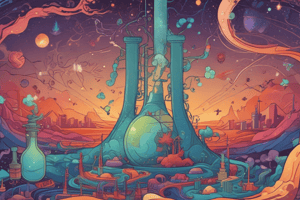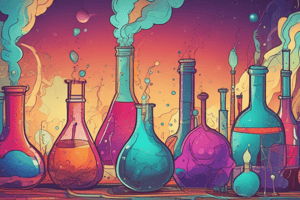Podcast
Questions and Answers
Match the following statements with their correct interpretation:
Match the following statements with their correct interpretation:
Reactions that release energy require energy to get started. = False Energy can be created during a chemical reaction. = False Where does the energy in a chemical reaction come from? = Chemical bonds or surrounding environment How do hot and cold packs become hot or cold so quickly? = Chemicals inside the packs undergo a temperature change
Match the following concepts with their descriptions:
Match the following concepts with their descriptions:
Energy Transfers = All matter is constantly moving, and more energy leads to increased particle movement and collisions. Thermal Energy in Chemical Reactions = Some reactions release thermal energy, while others absorb it due to breaking or forming of chemical bonds. Purpose of Medical Instant Cold or Hot Packs = To induce a temperature change by mixing chemicals inside the pack. Creation of Energy in Chemical Reactions = Energy cannot be created during a chemical reaction.
Match the following with their correct roles in chemical reactions:
Match the following with their correct roles in chemical reactions:
Breaking of Chemical Bonds = Requires energy Releasing of Energy = Occurs in some reactions Absorption of Energy = Occurs in some reactions Initial Energy Requirement for Reactions = Not necessary for reactions that release energy
Match the following with their correct properties:
Match the following with their correct properties:
Study Notes
Matching Concepts and Descriptions
- Match the following: This indicates a task where you need to associate sets of related information.
Identifying Roles in Chemical Reactions
- Understand that chemical reactions involve substances transforming into new ones.
- Identify the roles of various components within these reactions (e.g., reactants, products, catalysts).
Determining Properties
- Focus on the characteristics of substances or materials.
- Properties can relate to physical aspects (e.g., color, density, melting point) or chemical behavior (e.g., reactivity, flammability).
Studying That Suits You
Use AI to generate personalized quizzes and flashcards to suit your learning preferences.
Description
Test your understanding of energy changes in chemical reactions with this quiz. Decide whether you agree or disagree with given statements and then reconsider your answers after learning about the topic.




